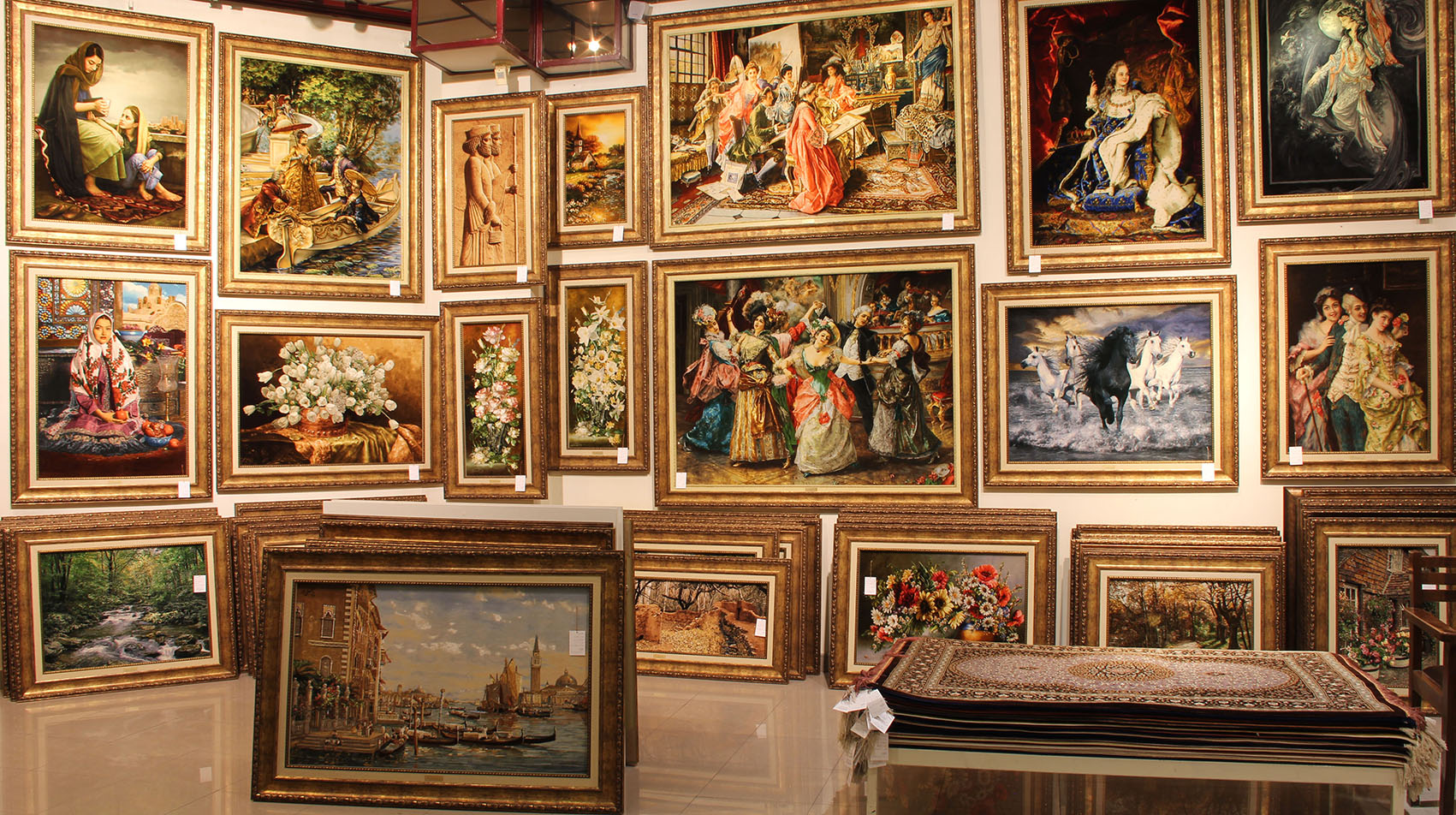The city of Sardroud in southwest Tabriz, East Azarbaijan Province, is considered the global hub of carpet tableaux production.
“The turnover of the industry in Sardroud, depending on whether it’s a good year or a bad one revolves around 6-9 trillion rials ($158-237 million) per year,” Kazem Sehhati, the head of Sardroud Carpet Tableaux Producers Union, told Financial Tribune.
“Around 80% of Iran’s carpet tableaux are hand-woven in Sardroud. The city’s designing and dyeing units also play a role in the production of the remaining 20%, which are made elsewhere in the country.”
The product, also known as pictorial or picture carpet and rug tableau, is a framed, ornamental carpet woven for the purpose of being hanged on walls for decoration as opposed to carpets that are laid on the floor.
Designs of pictorial carpets are different from those on typical floor carpets. Silk and wool are generally used to make these tableaux.
Sardroud’s hand-woven carpet tableau was officially registered by the World Intellectual Property Organization on January 5. It has also been registered on the National Tangible Cultural Heritage List by Iran’s Cultural Heritage, Handicrafts and Tourism Organization.
The National Carpet Center of Iran has awarded the National Geographic Seal to the product, which signifies the exclusiveness of carpet tableaux production in the region.
“China, Afghanistan and India also produce carpet tableaux. Yet, their products cannot compete with ours neither in terms of designs or colors, nor quality. After all, carpet tableaux were a Persian innovation in the first place,” Sehhati said.
“Today, we design our patterns using software. Technology and computers have given us space to maneuver and helped us design faces and bodies with precise perspective features to go with other delicate production procedures. Sometimes, designing a single pattern takes over a year.”
Sehhati said the first person to use software in designing pictorial carpets was Majid Barati from Sardroud, a graduate of Sharif University of Technology, and that’s how the city became the production hub of this art.
The first carpet tableau dates back to the time when Safavid dynasty reigned over Iran. It was later made more elaborate during the Qajar era.
Job Creation
The industry in Sardroud, says Sehhati, has created 15,000 direct jobs. The jobs of some 80% of the city’s 35,000 population are also tied to carpet tableau production.
“The many processes involved in carpet tableau production, such as preparing the raw material, dyeing, wrap winding, polishing, washing and embossing the tableaux, making the ornamental frames, transportation and trading, have created more than 320,000 sustainable jobs across the country,” he said.
First Vice President Es’haq Jahangiri assigned the National Carpet Center last week with the task of creating 20,000 jobs in the field by the end of the current Iranian year (March 20, 2018).
Sehhati said Sardroud’s carpet tableau industry has the capacity to create 20,000 jobs and many more.
Share in Exports
The Islamic Republic of Iran Customs Administration classifies carpet tableau exports under hand-woven carpet exports.
“So there is no precise figure about carpet tableau exports. But what I can say for sure is that carpet tableaux account for at least 10% of Iran’s hand-woven carpet exports annually,” he said
According to Iran Chamber of Commerce, Industries, Mines and Agriculture, about 5,700 tons of hand-woven carpets worth $345.7 million were exported in the last Iranian year (ended March 20, 2017), indicating a 7.5% and 18.4% year-on-year growth in terms of tonnage and value respectively.
“Our main export destination, at present, is China. The Chinese usually ask for tableaux depicting natural scenery. It is followed by Japan, Malaysia, Indonesia and the Persian Gulf littoral countries. The latter prefer woven Qur’an verses and prayers. We also have exports to the US, which buys tableaux depicting historical sites, scenes of nomadic life and nature,” he said.
“We have not been very successful in Europe, because they are more accustomed to hanging paintings on the wall. But we are trying to find new markets there by taking part in international exhibitions and familiarizing ourselves with their tastes.”
The 26th International Carpet Exhibition is scheduled to be held at Tehran’s International Fairgrounds from August 23 to 29.
Sehhati said one big pavilion will be dedicated at the exhibition for carpet tableaux.
Raw Material Procurement
The main raw materials used in weaving carpet tableaux include wool, silk and dyes.
Sehhati said silk is supplied domestically, but wool is mainly imported from Indonesia, South Korea and Australia.
“The natural dye we use is domestically produced, but chemical dyes are usually imported from Germany and China. We are currently in talks with the University of Tabriz’s Carpet Faculty to provide us with the natural version of chemical dyes we import in a range of tonalities. If we are successful, we can become self-sufficient in this respect,” he concluded.



